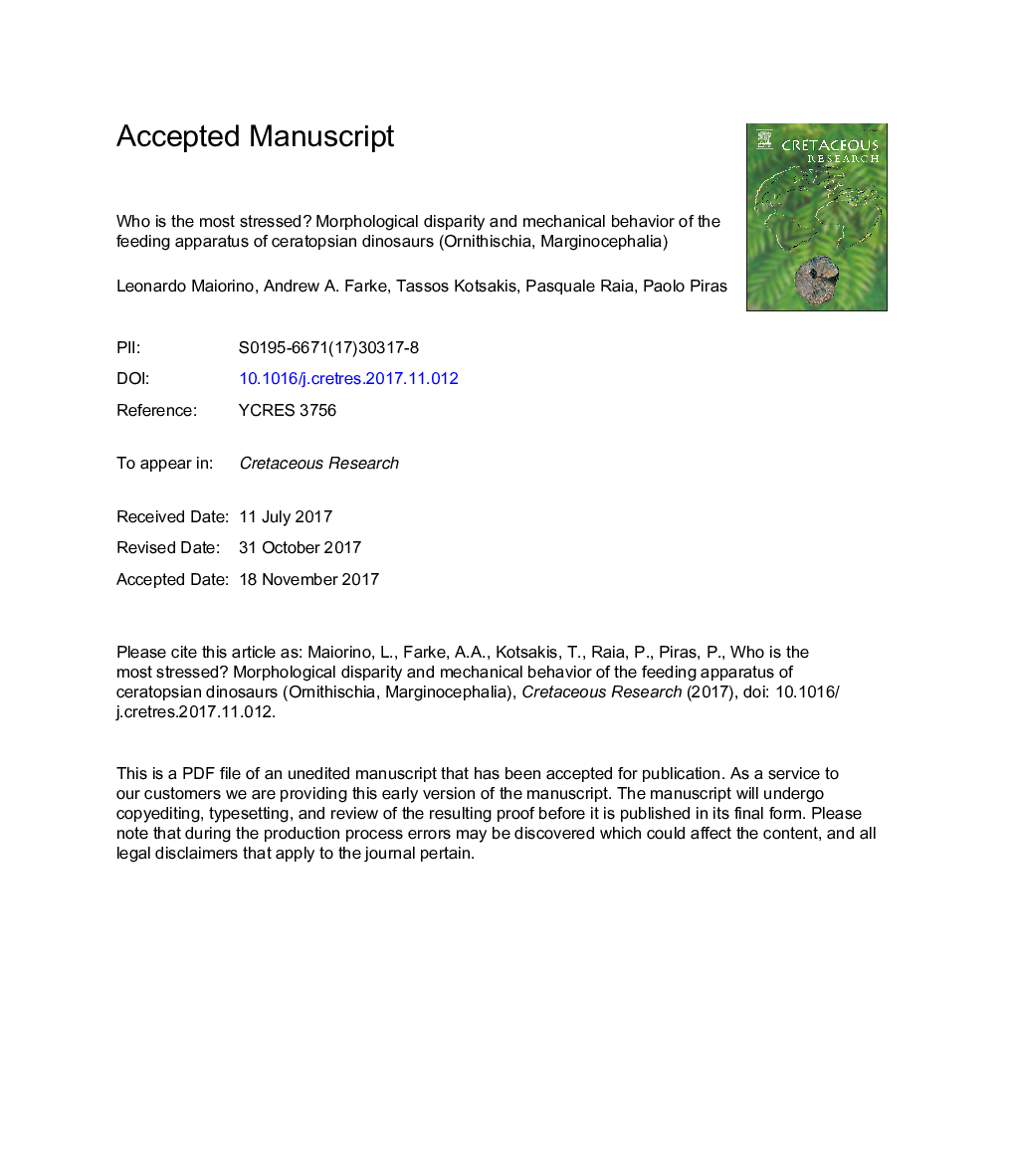| Article ID | Journal | Published Year | Pages | File Type |
|---|---|---|---|---|
| 8916378 | Cretaceous Research | 2018 | 51 Pages |
Abstract
Our results show that the stress (physical loadings modeled in response to biting) in lower jaws was quite similar between “basal” and “derived” taxa, whereas major differences among clades occur for stress values associated with the coronoid process. The basal ceratopsians Hualianceratops and Yinlong had a highly stressed and primitive lower jaw, indicating that those animals may have fed on relatively soft foliage and fruits. A similar condition was found for basal neoceratopsians and protoceratopsids. Psittacosaurids possessed a well-integrated and compact lower jaw able to withstand high stress, at the cost of having a highly stressed coronoid process. Leptoceratopsids were characterized by the opposite condition. Taxa such as Leptoceratops, Prenoceratops, Zhuchengceratops and Cerasinops appear to have had a comparatively efficient feeding apparatus. Ceratopsidae represents the clade with the most efficient masticatory apparatus within Ceratopsia, even if the horizontal ramus of the lower jaw appears less able to withstand high levels of stress as compared with other ceratopsians. Additionally, we found the dentary and surangular-angular complex co-evolved to generate a masticatory apparatus able to withstand high stress, particularly in Protoceratopsidae and Triceratopsini. The major phenotypic evolutionary rate and morphological changes occurred during the mid- to Late Cretaceous, when intense climate change and angiosperm diversification could have affected the evolution of ecological diversity and feeding biomechanics in Ceratopsia.
Related Topics
Physical Sciences and Engineering
Earth and Planetary Sciences
Palaeontology
Authors
Leonardo Maiorino, Andrew A. Farke, Tassos Kotsakis, Pasquale Raia, Paolo Piras,
